Last Updated on January 30, 2023
When you are painting your walls, it’s important to make sure that the drywall tape is completely covered so that it doesn’t show through the paint. Your walls will look terrible if the tape is not covered once the paint dries. No one wants to see the raw, naked seams of drywall tape poking through fresh paint.
The tape in the drywall can be a challenging problem to avoid, but with a little knowledge and preparation, you will be able to fix it fast and have it not show through the paint. Our goal in this blog post is to improve your understanding of “How to Fix Drywall Tape Showing Through Paint.” A few simple steps can be taken to fix drywall tape that shows through the paint.
You can now hide those seams and make your finished product look seamless. Stay professional, and stay ahead of your competition read on. By following these steps, you can fix drywall tape showing through paint and have beautiful walls that look like they were painted by professionals.
How to Fix Drywall Tape Showing Through Paint: Fixing Steps
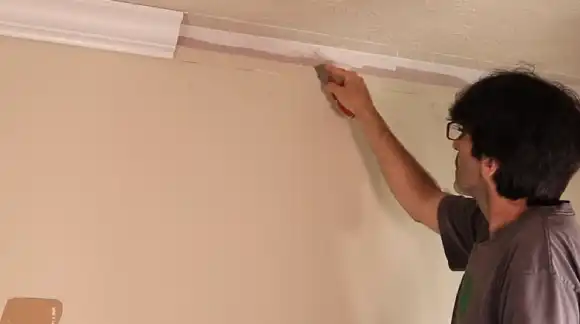
The unsightly sight of drywall tape showing through the paint is a common problem that plagues many homeowners. Fixing drywall tape showing through paint is relatively straightforward and can be done in a few simple steps.
Step 1: Prepare and Clear Away the Area to be Fixed
The first step of fixing shown drywall tape involves prepping the area by clearing away any airborne particles from the affected area of drywall. Be sure to use a vacuum cleaner or damp cloth to ensure that everything is cleaned off before you start working on the wall.
This will help you create a clean surface for painting and make sure that everything adheres properly. Once you have prepped the area, use sandpaper to lightly sand around the edges of the affected area. This will help create an even surface for painting.
Step 2: Applying Primer
After you have prepped and sanded your wall for fixation, it’s time to apply a coat of primer over the affected area of drywall tape. Make sure you use a high quality primer specifically designed for drywall surfaces.
When applying primer, make sure to do so in thin coats as opposed to thick ones; this will help ensure that your paint job doesn’t end up looking uneven or lumpy when it dries.
Allow each coat of primer some time to dry before applying another one; usually, 15 to 20 minutes should be enough time for each coat of primer to fully set before adding another layer on top.
Step 3: Apply Paint & Finishing Touches
Once your primer has been applied and has had adequate time to dry, it’s time to add your color swatch of paint over the top. Ensure you are using high quality paint specifically designed for drywall surfaces. Don’t try and cut corners by using lower quality paint, as it won’t adhere properly and may not look quite as good as you want to see after the fixation is complete when dried.
After your color coat has been applied, let it dry completely before touching up any final details with a small brush (this could include masking off any areas surrounding where you painted). Once all touch ups are complete, let your wall fully cure dry before hanging anything back up on it.
What Causes Drywall Tape Showing Through Paint?
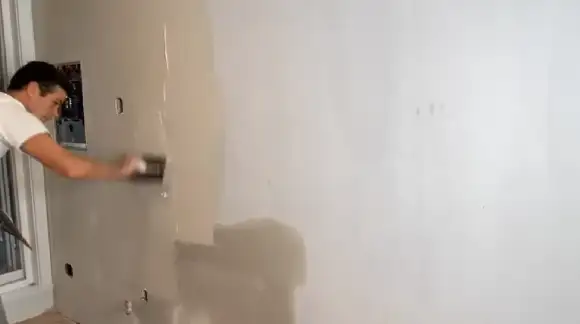
Have you ever noticed that after painting a wall, the tape from where two pieces of drywall join together can become visible? It’s a common problem, and it happens for a few different reasons. There are several possible causes for this issue. Let’s take a look at why paint might be showing through drywall tape and how to fix it.
Common Reason 01
One of the most common is insufficient joint compound or mud being used when taping the joint between two pieces of drywall. If there isn’t enough material in place, it won’t cover the entire seam, so some parts will remain exposed even after painting. If the tape is not applied correctly, air bubbles can form underneath it, which will also cause it to become visible after painting.
Common Reason 02
Another reason could be that you didn’t use a quality primer before painting. A good primer provides an even surface for your paint to stick to and helps hide any imperfections in your walls. Not using one can cause those imperfections like drywall tape to show through later on.
Lastly, if you don’t wait long enough for the primer to dry before applying paint, it can leave streaks or other marks on your walls that may make the drywall tape more visible than usual.
Fixing Visible Drywall Tape
Fortunately, fixing this issue is fairly simple. Start by scraping off any loose or peeling paint with a putty knife and then sand down the area until smooth. Next, apply a coat of high quality primer over the area and let it sit overnight to ensure it is completely dry before continuing on with your project.
Apply another coat of paint over the top, and you’re done. The walls should now be seamless, and there will be no indication that the drywall tape was ever showing through.
The Different Types of Drywall Tape and Their Uses
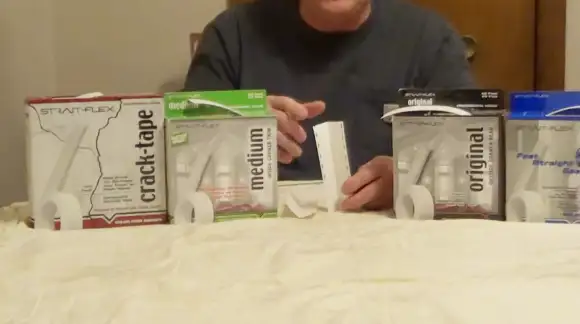
Drywall tape, also known as joint tape, is a thin strip of paper that is used to cover the seams between drywall panels. Drywall tape is essential for creating smooth walls and ceilings in both residential and commercial buildings.
Whether you are a professional contractor or just tackling a home improvement project, learning about the varieties of types of drywall tape can save you a lot of time and effort.
Drywall tape is an important part of any construction or repair job, and the right type can ensure a better result. It’s an inexpensive material that helps to prevent cracking between two adjoining sheets of drywall. Let’s take a closer look at the three common types of drywall tape and how each one should be used.
Types of Drywall Tape
There are three main types of drywall tape: fiberglass mesh tape, paper tape, and cloth mesh tape.
Fiberglass Mesh Tape
Fiberglass mesh tape is the most popular type of drywall tape due to its strength and durability. It is made from woven glass fibers, which provide superior adhesion to any surface, including corners and edges.
Fiberglass mesh tape also has more flexibility than other types of drywall tape, making it great for covering large areas in one go. To use fiberglass mesh tape, simply cut it to size, apply adhesive to the back side, then press it firmly into place on the wall or ceiling where you need it.
Paper Tape
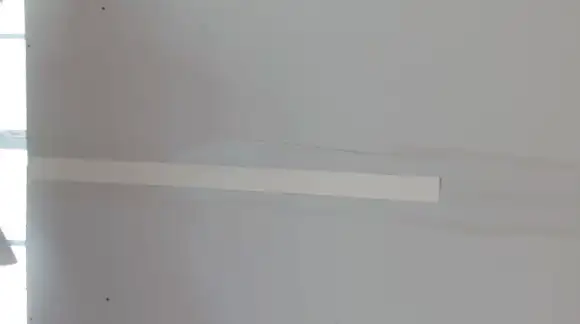
Paper tape is often used in areas that require extra reinforcement, such as inside corners or outside corners. It is made from paper reinforced with fiberglass strands that provide additional strength and flexibility when applied correctly.
Paper drywall tape should be applied using an adhesive that is compatible with paper products, such as latex or acrylic based adhesives. This type of drywall tape does not provide much flexibility, so it works best for straight lines or small areas where precision is required.
Foil Backed Tape
Foil backed drywall tape offers superior adherence compared to other types of tapes but requires more specialized tools for installation, like an air compressor or heat gun. It is made from aluminum foil with a special adhesive backing that helps create an airtight seal between two surfaces when heated properly.
Foil backed tapes are usually used on walls that are exposed to moisture since they offer extra protection against water damage. They are also ideal for creating vapor barriers between walls and ceilings in bathrooms, kitchens, basements, etc. Because they do not absorb water as traditional tapes would.
Cloth Mesh Tapes
Cloth mesh tapes are made from woven fabric and have adhesive on one side as well as an embossed pattern on the other that helps create a stronger bond with the joint compound. All of these tapes come in various sizes depending on your application needs.
Uses for Drywall Tape
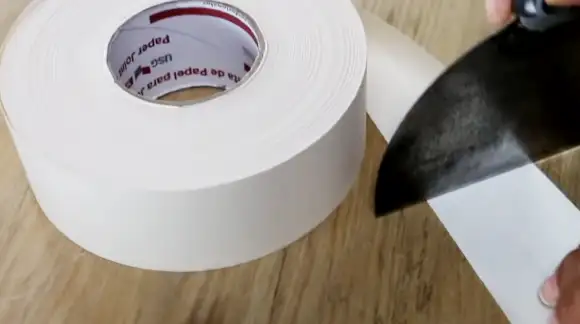
The primary purpose of drywall tape is to help secure seams between two boards of drywall or plasterboard, which helps create a seamless wall surface while preventing cracks from forming over time due to temperature changes or vibrations within a building.
This type of material can also be used when repairing damaged walls or ceilings by providing support when applying joint compounds or spackling paste over holes or dents in existing surfaces.
Many people use this product as an alternative to wallpaper as it provides a similar effect without purchasing traditional wallpaper materials like paste or glue.
How Do You Fix Paint Bubbles Caused By Drywall Tape?
Painting walls is a great way to spruce up any room. But if you’re not careful, drywall tape can cause paint bubbles. If this happens to you, don’t worry. Here’s how to fix them. We’ll walk you through the steps, so even DIY beginners can tackle the job with confidence.
Step 1: Cut Out the Bubble
The initial step is to cut out the bubble and remove it from the wall. Use a utility knife or box cutter and carefully cut around the edges of the bubble, being sure not to cut too deep into your drywall. Once it’s been removed, carefully sand down any rough edges left behind.
Step 2: Apply More Drywall Tape
Once you’ve removed and sanded down the old drywall tape, it’s time to place new tape over the spot where you made your cuts. Make sure that all edges have firmly adhered before proceeding.
Step 3: Prime and Paint
Finally, prime and paint over the area where you applied your drywall tape. This will give you an even finish and help ensure that no further bubbling occurs after the painting is completed. Be sure to let your primer and paint fully cure before putting anything back on your walls or floors in order for it to adhere properly.
How Do You Fix Paint Peeling Caused By Drywall Tape?
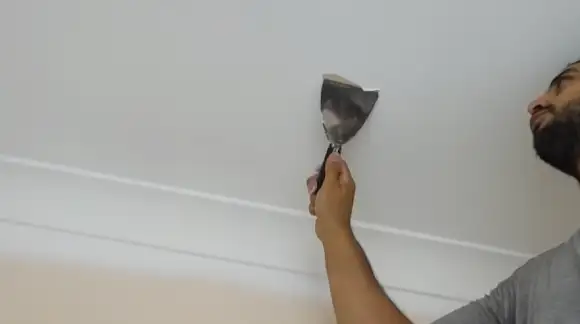
Drywall tapes are used to cover and seal joints between the drywall and other building materials. While drywall tape can provide a seamless finish to your walls, it can create an issue if it’s not applied correctly or for the wrong purpose.
If you are experiencing paint peeling off because of drywall tape, there’s no need to panic. There are some simple steps you can take to fix this issue. Keep reading for a step by step guide on how to fix paint peeling due to drywall tape.
Step 1: Prep Your Wall
You will need to prep your wall. This step is important because it will help the repair process go more smoothly and ensure that your wall looks great when the job is done. Use a putty knife or sandpaper to scrape away any loose paint or damaged plaster around the area of concern.
If there is any cracked or crumbling plaster, be sure to remove it all with the putty knife. Once you’ve finished prepping, use a damp cloth to clean off all dust particles from the wall so that it’s ready for the next step.
Step 2: Patch Any Holes
Once your wall has been prepped, you will need to patch any holes left in the wall after scraping away loose paint or plaster. Start by applying a thin layer of joint compound over all holes and cracks using a putty knife. Allow this layer of joint compound to dry completely before proceeding to the next step.
Step 3: Apply New Tape
Now it’s time to apply new tape over the patched areas on your wall. Start by pressing new pieces of joint compound tape onto each hole or crack in your wall, overlapping them slightly if necessary so that they cover any remaining gaps completely.
Use your putty knife again to press down firmly, and make sure that each piece of joint compound tape is securely attached before moving on to the next area of concern.
What are Some Common Causes of Drywall Tape Showing Through Paint?
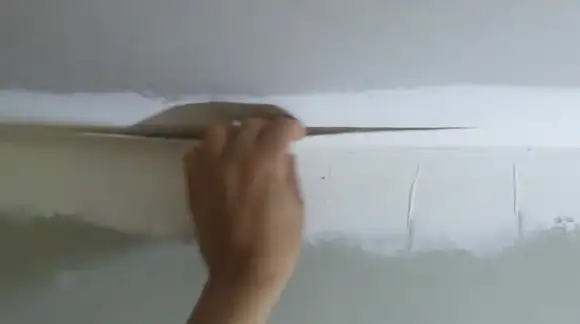
Have you recently painted your walls only to discover that the drywall tape is starting to show through the paint? This phenomenon is a common occurrence, but it can be frustrating as it brings down the aesthetic value of your interior design. To help you out, let’s look closer at what causes drywall tape to show through paint and how to avoid this issue in the future.
Poor Quality Drywall Tape
The quality of the drywall tape used when constructing and installing a wallboard plays an important role in how well the paint will adhere later on. Low quality tapes are less likely to adhere completely to the joint compound and wallboard, leaving room for air bubbles and gaps.
This can allow for moisture buildup between layers. These tapes are more likely to peel or lift over time, causing them to become visible underneath paint layers.
You Might Want to Check: Does interior stacked stone need to be sealed?
Poorly Prepared Joint Compounds
For drywall taping and joint compound application techniques to be effective, they must be properly prepared beforehand. The joint compound should always contain equal parts of water and powder mix for it to adequately stick together and form a strong bond with the drywall tape without cracks or holes forming between layers.
If not prepared correctly, joint compounds may start lifting away after exposure to moisture or other environmental factors, such as temperature changes, leading to drywall tape showing through paint layers.
Applying Too Much Paint in One Layer.
Excessive application of paint in one layer can also cause drywall tape to show through due to excessive build up of thickness on top of the tape itself.
When applying multiple coats of paint on top of existing layers, ensure that each coat is applied lightly and evenly across all surfaces so as not to cause any unnecessary thickening that could lead to peeling or flaking off over time.
Ensure that any new coats are allowed adequate time for drying before adding additional layers on top. This will ensure that all components remain securely bonded together with no loose ends sticking out from underneath.
Conclusion
No matter how perfect your preparation is when painting walls in your home or office building, sometimes issues like drywall tape becoming visible can arise afterward. Understanding what causes this problem as well as what steps you need to take to fix it can help ensure that future projects turn out perfectly every time.
Just remember always use plenty of joint compounds when taping seams between pieces of drywall; use quality primers, and make sure everything has dried completely before applying another coat of paint. That way, you will end up with flawless walls each time.
Drywall tapes showing through paint can be faced by many homeowners who are redecorating their homes or repairing their walls. For more information about our services, please feel free to contact us. We would love to help you create a beautiful home without worrying about pesky drywall issues.



